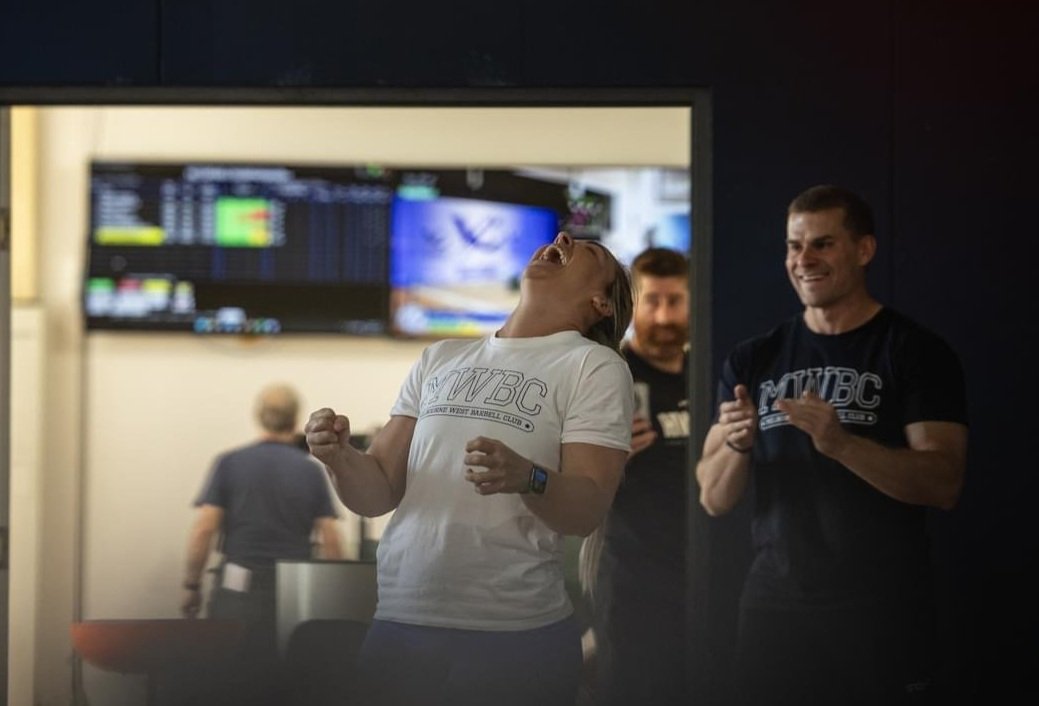The Max Out Trap & Why Missing a Lift Doesn’t Mean You’re Failing
Raise your hand if you’ve ever walked into the gym at the end of a training block and thought, “Today, I want to see what I’m really made of – let’s max out.” Only to be left feeling deflated, disappointed, or downright disrespected by the barbell when an unplanned max-out didn't go as planned (the audacity, right?).
At MWBC, maxing out is less about ego and more about understanding what each lift teaches us. Hitting (or not hitting) top weights brings up questions about our progress, expectations, and sometimes, our sense of self.
In reality, the outcome of a max-out session isn’t always about the numbers you achieve. It’s about collecting data to build momentum through consistent, balanced training across a cycle.
Sure, it can be fun to max out at the end of a block—or even randomly in the middle of your deload if you like giving your coach a heart attack—but let’s explore what maxing out can mean, what it doesn’t mean, and why missing a lift doesn’t define your progress.
What “Maxing Out” Can (and Can’t) Tell You
For most lifters, maxing out is a way to see how things are coming together: strength, form, and focus. But it’s easy to put too much pressure on ourselves, attaching meaning to every lift.
- A Max Isn’t Just About Strength: Your max doesn’t only reflect strength; it’s also affected by sleep, stress, and nutrition. So while maxing out can gauge progress, it’s not a definitive statement of where you’re at every time you go heavy.
- Missing Doesn’t Mean Failure: Missed lifts are part of the process. Each one teaches you something—maybe it’s a technical adjustment, or a signal to dial back and focus on foundations. Missing isn’t failing; it’s just data.
- Success is About Momentum, Not Perfection: The real goal isn’t maxing out every time. The steady progression in your program—through reps, form, and improvement—is what builds momentum toward a new peak. Could we write a program without any misses? Sure, but would that actually build the momentum you need? Probably not.
Rethinking Progress: What Do You Make a “Miss” Mean?
In a training culture that often attaches self-worth to results, we’re here to reframe that mindset. Missing a lift, hitting a lighter day, or taking a rest day doesn’t diminish your progress. Here’s how to reframe what a miss can mean:
1. Missing Isn’t Losing Progress
Think of each lift as a stepping stone, whether you hit it or not. A miss doesn’t erase gains; it’s a cue to listen to your body and refine your approach. That’s progress in itself.
2. You Don’t Need to Hit 100% Every Day
If you’re thinking, “I missed 90%, am I getting weaker?” remember that consistent gains come from balanced training cycles that build you up gradually—not from maxing out every session. Trust the program; lighter days are as crucial as heavy ones.
3. Misses Build Resilience
Missing is a reminder that we’re not machines. Working through frustration, recalibrating, and returning stronger next time is part of building resilience. Each lift, whether hit or missed, adds to your journey.
Building Confidence in Your Program: What Each Day Really Means
Your program is designed to bring out your best over time. Here’s how each type of session contributes to your growth:
- Lighter Days: Perfect for honing technique and movement quality, these sessions lay the groundwork for future heavy lifts.
- Medium Days: These build controlled strength. These sessions ensure your body can handle loads while maintaining form, preparing you for when it’s time to push.
- Heavy Days: These are the test days, where you might aim for maxes. But they’re strategically placed, backed by all the work you’ve done on the lighter and medium days. Even when everything’s in place, these days sometimes don’t go as planned – and that’s okay.
Missing a lift on a heavy day doesn’t set you back – it’s part of the process. When you trust each session’s role, you’re building the foundation to hit new bests without burning out.
Key Reminders to Stay Grounded
If you’re feeling discouraged about a missed lift or questioning if you should be maxing out more often, keep these points in mind:
- Track More Than Just KGs:
There’s so much to be proud of beyond your heaviest lifts. Track improvements in form, recovery, and how you feel in each session. Growth shows up in many areas, not just in your maxes.
- Check in With Your Why:
Why do you lift? To build strength, learn new skills, feel good? None of that requires maxing out all the time. Remind yourself of the purpose behind your training and release unnecessary pressure.
- Work with Your Coach:
A coach can help you interpret your results, guide you on when to push, and remind you that steady progress is the path to true strength. They’ll show you how each part of your program moves you closer to your goals.
Your Training is About Building Up, Not Breaking Down
In the end, lifting isn’t about maxing out every session or chasing PBs every time. It’s about building momentum, gaining confidence, and getting stronger over the long haul. Missing a lift, lifting lighter, or sticking to the program isn’t a setback—it’s a step forward.
Ready to embrace the process? Trust your program, listen to your body, and remember: progress is about more than just the numbers on the bar.
-Coach Caity

